By Charlene Klassen Endrizzi, Westminster College, retired, and Rebecca Ballenger, Worlds of Words, University of Arizona, Tucson
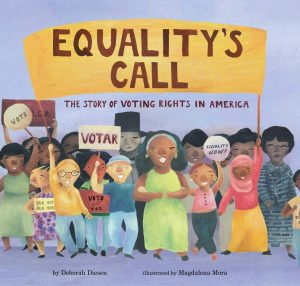 Jane Goodall recently outlined, “Every vote matters, more this year than perhaps any time in history.” As voters from the United States to South Africa, Mexico, India and beyond enter a major election year, Jane urges anyone who will listen to pause and consider each candidate’s record on a single issue–her/his/their efforts to support the health of our Earth. Yet we know U.S. voters will ponder additional issues, ranging from the economy and democracy to immigration, reproductive rights, foreign policy, gun rights, equality and more.
Jane Goodall recently outlined, “Every vote matters, more this year than perhaps any time in history.” As voters from the United States to South Africa, Mexico, India and beyond enter a major election year, Jane urges anyone who will listen to pause and consider each candidate’s record on a single issue–her/his/their efforts to support the health of our Earth. Yet we know U.S. voters will ponder additional issues, ranging from the economy and democracy to immigration, reproductive rights, foreign policy, gun rights, equality and more.
This month we look at current and past voting rights battles for various groups of disenfranchised citizens like women, Indigenous people and African Americans. Making your voice and vote count seems to be on many citizens’ minds these days. In fact, more eligible voters cast a ballot in the 2020 presidential election than in previous years (Pew Research Center). Yet there remains roughly a third of voters who do not see the value of casting a ballot. Not surprisingly, one can see a racial divide since previously disenfranchised voters tend to cast a ballot at lower rates than white voters.
Studying the tumultuous history of U.S. voting rights raises many issues for exploration. Deborah Diesen offers an overarching look at voter inequalities through Equality’s Call: The Story of Voting Rights in America (2020), illustrated by Magdalena Mora. She invites readers to consider voting struggles encountered by eligible but overlooked American voters such as poor, non-landowning men in the 1700s, women in the 1990s and African Americans even today. A thoughtful re-occurring refrain in Deborah’s story, “A right isn’t a right, ’til it’s granted to all,” emphasizes the on-going need to overcome voter suppression tactics. As Diesen explains, “Equality is still calling.”
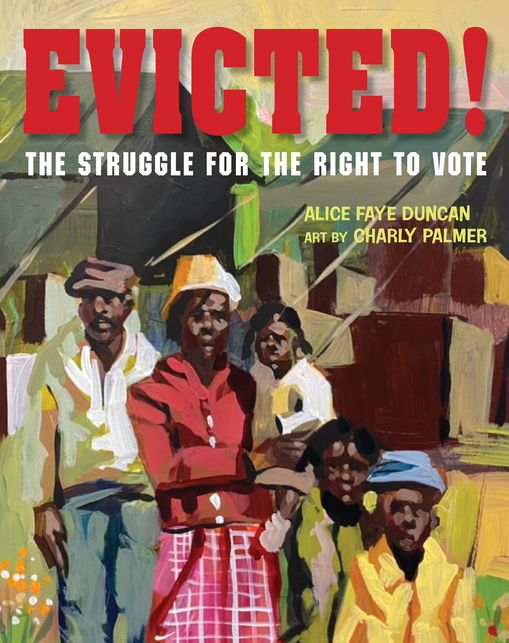 Alice Faye Duncan and Charly Palmer take readers on a journey to the late 1950s, when Black landowners in Tennessee organized voter registration drives for Black sharecroppers. Her middle-grade text, Evicted!: The Struggle for the Right to Vote, retells the ensuing fight, showing how white voters retaliated by evicting Black sharecroppers from their shacks and denying them services at local banks, stores and doctors’ offices (Zinn Education Project). This voter suppression effort led Black and white college students to launch a voting rights movement in the 1960s. Duncan’s text reminds us of how our nation’s racial struggles can readily be seen in our muddied history of voting rights.
Alice Faye Duncan and Charly Palmer take readers on a journey to the late 1950s, when Black landowners in Tennessee organized voter registration drives for Black sharecroppers. Her middle-grade text, Evicted!: The Struggle for the Right to Vote, retells the ensuing fight, showing how white voters retaliated by evicting Black sharecroppers from their shacks and denying them services at local banks, stores and doctors’ offices (Zinn Education Project). This voter suppression effort led Black and white college students to launch a voting rights movement in the 1960s. Duncan’s text reminds us of how our nation’s racial struggles can readily be seen in our muddied history of voting rights.
To help students and teachers navigate an array of voting issues, educators may consider using several media literacy resources. For example, teachers can use this Nickelodeon video featuring Keke Palmer with younger students. It offers a thought-provoking overview by introducing dilemmas like literacy tests and poll taxes.
Pursuit of History provides older students with a glimpse of voting barriers created to staunch recently gained voting rights. For example, after the 15th Amendment outlined the right of African Americans to vote, the “Grandfather Clause” was created. This clause meant that African American men could only vote if their grandfathers voted. The video also introduces the Vietnam-era notion that if people are old enough to fight (age 18), they are old enough to vote.
Informative voting history timelines can be found at The American Leader or at Learning for Justice.
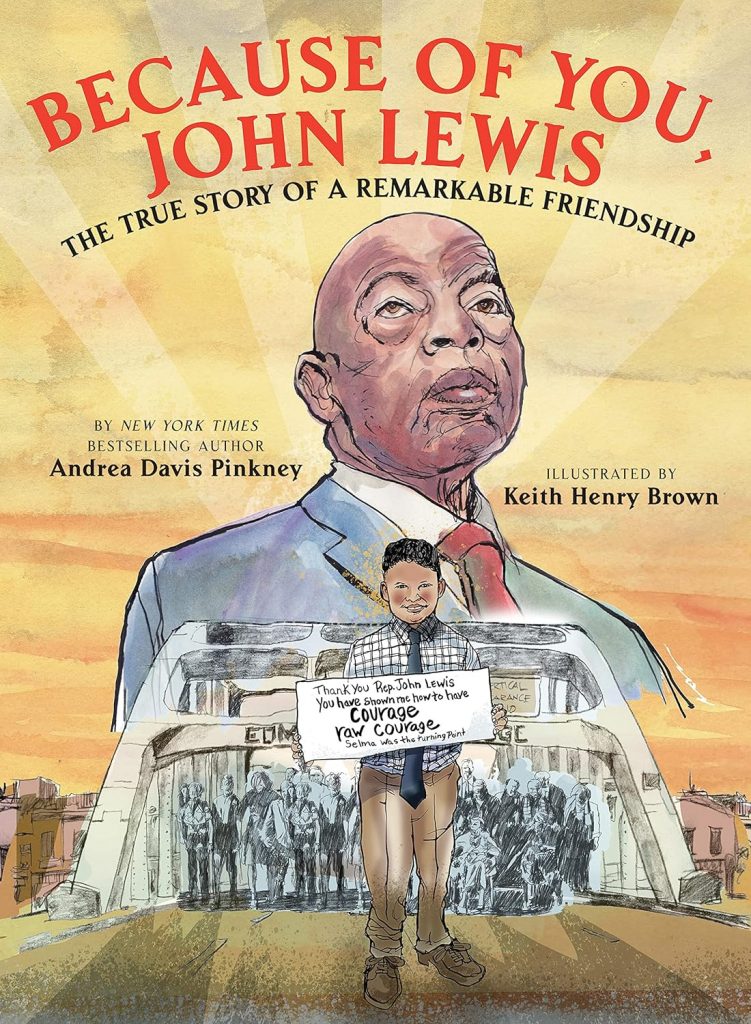 A pillar of the Civil Rights’ Movement in the 1960s, John Lewis, is the centerpiece of Andrea Davis Pinkney and Keith Henry Brown’s book, Because of You, John Lewis (2020). His fearless march alongside Martin Luther King Jr. over the Edmund Pettus Bridge in Selma, Alabama, generated momentum which led to the signing of the Voting Rights Act of 1965. Pinkney focuses her chronicle on the inspiring friendship between Congressman Lewis and a young activist, Tybre Faw, from Tennessee. Even after John Lewis passed away in 2020, Congress continues to debate voter rights matters as seen in the Freedom to Vote: John R. Lewis Advancement Act, still not passed as of April 2024 (Brennan Center for Justice).
A pillar of the Civil Rights’ Movement in the 1960s, John Lewis, is the centerpiece of Andrea Davis Pinkney and Keith Henry Brown’s book, Because of You, John Lewis (2020). His fearless march alongside Martin Luther King Jr. over the Edmund Pettus Bridge in Selma, Alabama, generated momentum which led to the signing of the Voting Rights Act of 1965. Pinkney focuses her chronicle on the inspiring friendship between Congressman Lewis and a young activist, Tybre Faw, from Tennessee. Even after John Lewis passed away in 2020, Congress continues to debate voter rights matters as seen in the Freedom to Vote: John R. Lewis Advancement Act, still not passed as of April 2024 (Brennan Center for Justice).
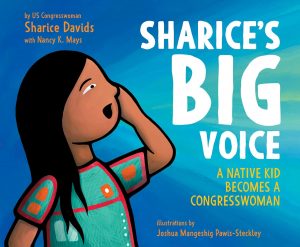 One group historically overlooked, who still face challenges to reach the polling station, is our Indigenous population. Following World War II, when essential Navajo Code Talkers struggled to vote, more attention was finally focused on the Indigenous fight to vote. While the Voting Rights Act of 1965 was helpful, many Indigenous people still face voter suppression tactics like restrictive voter ID requirements, inadequate polling locations on tribal land and more. Currently Sharice Davids, U.S. Representative from Kansas, is working on an array of issues from equal rights for LGBTQ+ people to passing the bipartisan Native American Voting Rights Act. While voting issues are not directly explored in Sharice’s Big Voice by Nancy K. Mays, Sharice Davids and Joshua Mangeshig Pawis-Steckley, Davids is an important Congresswoman to watch.
One group historically overlooked, who still face challenges to reach the polling station, is our Indigenous population. Following World War II, when essential Navajo Code Talkers struggled to vote, more attention was finally focused on the Indigenous fight to vote. While the Voting Rights Act of 1965 was helpful, many Indigenous people still face voter suppression tactics like restrictive voter ID requirements, inadequate polling locations on tribal land and more. Currently Sharice Davids, U.S. Representative from Kansas, is working on an array of issues from equal rights for LGBTQ+ people to passing the bipartisan Native American Voting Rights Act. While voting issues are not directly explored in Sharice’s Big Voice by Nancy K. Mays, Sharice Davids and Joshua Mangeshig Pawis-Steckley, Davids is an important Congresswoman to watch.
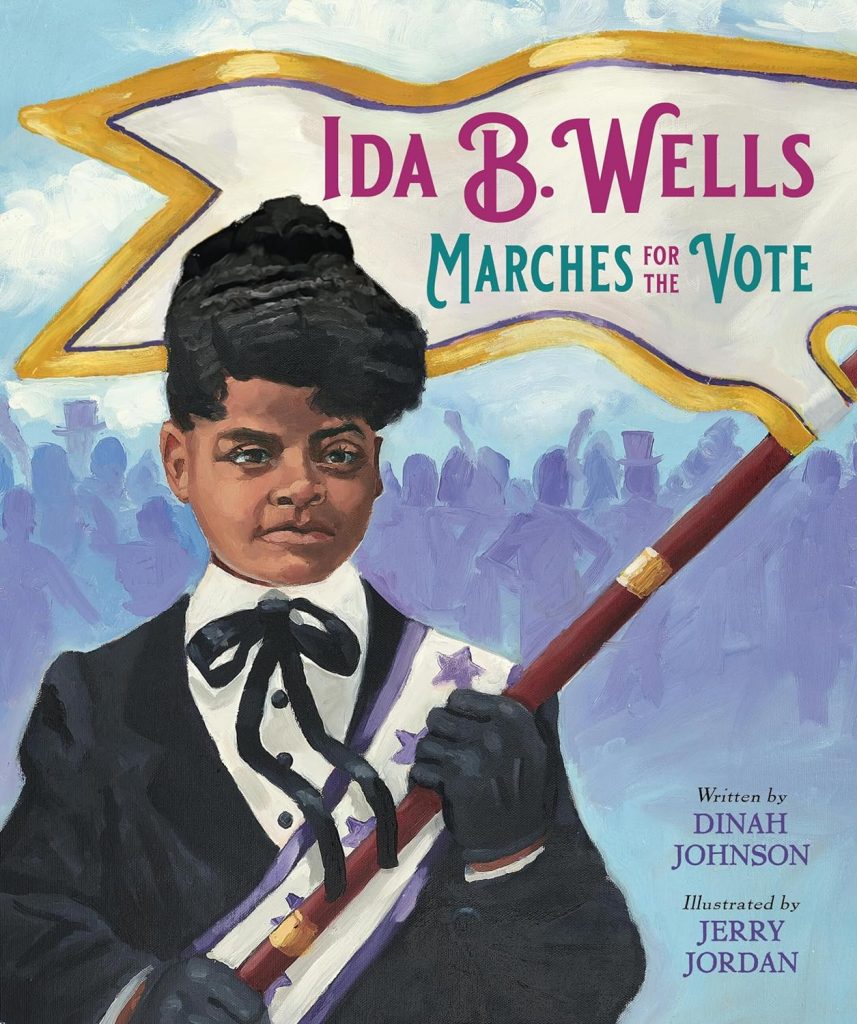 Women’s suffrage in the U.S. is often told through the lens of white feminism, thus overlooking the contributions of BIPOC people in the movement. Ida B. Wells Marches for the Vote by Dinah Johnson and Jerry Jordan is a picturebook biography of this journalist icon that focuses specifically on her work as a suffragist. Having lived without “a perfect freedom,” observing as her father was fired for voting and becoming a teacher to support her siblings upon the death of her parents, Wells organizes the alpha Suffrage Club to secure the vote for Black women. She travels to Washington, D.C., for the Women’s March of 1913 and is relegated to the back of the line – but she doesn’t stay there.
Women’s suffrage in the U.S. is often told through the lens of white feminism, thus overlooking the contributions of BIPOC people in the movement. Ida B. Wells Marches for the Vote by Dinah Johnson and Jerry Jordan is a picturebook biography of this journalist icon that focuses specifically on her work as a suffragist. Having lived without “a perfect freedom,” observing as her father was fired for voting and becoming a teacher to support her siblings upon the death of her parents, Wells organizes the alpha Suffrage Club to secure the vote for Black women. She travels to Washington, D.C., for the Women’s March of 1913 and is relegated to the back of the line – but she doesn’t stay there.
Wells’ continues to inspire women working toward social justice, including Nikole Hannah-Jones, creator of the 1619 Project that includes The 1619 Project: Born on the Water, a picturebook she wrote with Renée Watson and Nikkolas Smith. Hannah-Jones uses Ida Bae Wells to identify herself on X (formerly Twitter) and discuss social and political issues including voter rights.
While this post has not explored voting rights for every disenfranchised group, such as Mexican Americans or Asian Americans, the fight for all citizens to enter a polling booth continues. In the next year, we hope to see picturebooks or historical biographies examining the work of Dr. Mabel Ping-Hua Lee (1987 – 1966) who fought for women’s voting right and against the Chinese Exclusion Act which was finally repealed in 1943.
In her Evicted! epilogue, Alice Faye Duncan writes, “Injustice remains as persistent a foe as it was in 1959… Voter suppression and intimidation continues in every corner of the nation.” And it’s true. We see Gerrymandering, redistricting issues and voter suppression tactics continue to plague our democracy. Nonetheless, Hillary Clinton recently urged citizens to “not throw away or ignore the power of your vote.”
In response to Duncan, Clinton, and those mentioned in this post who fought for their right to vote, how will you continue the hard work of many activists, abolitionists, suffragettes and ordinary citizens who stood up, thereby allowing all citizens equal access to the polling booth? And finally, an invitation, let us know in the comments how you share the history and importance of voting rights in the U.S. in your classroom or with young people.
WOW Currents is a space to talk about forward-thinking trends in global children’s and adolescent literature and how we use that literature with students. “Currents” is a play on words for trends and timeliness and the way we talk about social media. We encourage you to participate by leaving comments and sharing this post with your peers. To view our complete offerings of WOW Currents, please visit its archival stream.
- Themes: Alice Faye Duncan, Because of You, Charlene Klassen Endrizzi, Deborah Diesen, Dinah Johnson, Equality's Call, Ida B. Wells Marches for the Vote, Jerry Jordan, John Lewis, Joshua Mangeshig Pawis-Steckley, Keith Henry Brown, Magdalena Mora, Nancy K. Mays, Rebecca Ballenger, Sharice Davids, Sharice’s Big Voice, voting
- Descriptors: Books & Resources, Debates & Trends, WOW Currents

It’s interesting to see a timeline of sorts being showcased here. When looking at this blog post, we have made important strides to include voting rights for all American citizens. A question we must ask is, “Why are some populations dismissing poll centers?” Do they feel their vote is not important? I certainly hope not. It’s a right, a privilege, and a duty as American citizens to vote.